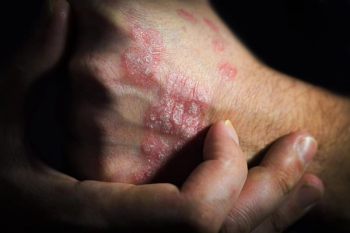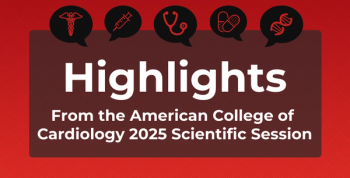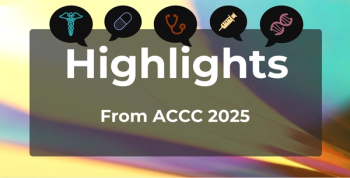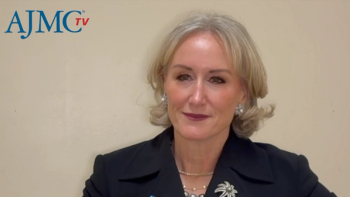
Pollen-Induced Allergic Rhinitis: Examining Trends From Childhood to Adulthood
This research highlights the close relationship between pollen-induced allergic rhinitis, sensitization, and asthma.
This article was originally published on
Children who suffer from
The investigators of these new findings cited several studies indicating that AR tends to increase in prevalence with age among children and that it may persist for several years, with limited information on remission. In adults, remission rates have been shown to vary but can be as high as 36% over an extended period.2,3
The long-term study examining pollen-AR was led by Magnus Lindqvist from the Division of Immunology and Allergy’s Department of Medicine Solna at the Karolinska Institutet and Karolinska University Hospital in Stockholm, Sweden.
“The aim of this study was to investigate the natural course of pollen-AR by prospectively following the same individuals over 20 years, including the transition from childhood into young adulthood, with respect to prevalence, persistence, remission of disease, and development of asthma,” said Lindqvist and colleagues.
Data for their study came from the Barn/Children Allergi/Allergy Milieu Stockholm Epidemiologic study cohort, which was a population-based birth cohort study comprising 4089 children who had been born in Stockholm between 1994 and 1996.
The investigators recruited children at a median age of 2 months and tracked them through several questionnaires related to allergies. At ages 4, 8, 16, and 24 years, the team invited the subjects who had completed questionnaires for clinical follow-up assessments, including blood samples for the purposes of silicon-germanium (sIgE) tests.
Their research assessed all subjects with sIgE-test results and completed questionnaire information related to symptoms of asthma, AR, and treatment with allergen immunotherapy at the specified ages. The overall patient cohort was 1137.
They subjected the blood samples to screening for allergen-specific immunoglobulin (sIgE) levels as a response to inhaled allergens using Phadiatop, which is a combination of the common inhaled allergens grass, birch, mugwort, mold, dog, cat, horse, and house dust mites. For their research, sera with a positive Phadiatop result—defined as sIgE levels of 0.35 k UA/L or greater—was further analyzed for sIgE reactivity to the airborne allergens included in the team’s screening process.
Pollen-AR was characterized by the investigators as a patient having symptoms of a runny, itchy, or congested nose; sneezing; eyes that itched or watered when subjects dealt with exposure to a combination of birch and/or grass pollen; and sIgE levels of 0.35 k UA/L or greater to grass and/or birch.
The research team showed that around 75% of the children who reported experiencing pollen-AR by age 4 or 8 years had the condition persist until they reached age 24 years, and about 30% of them were shown to have developed asthma.
The team found that the likelihood of subjects having persistent pollen-AR was substantial even when the levels of pollen-specific IgE were found to be fairly low. They also noted that the highest rate of recovery from subjects’ pollen-AR took place between ages 16 and 24 years, with around 21.5% of them reporting remission in this time period.
Despite these findings, the investigators reported that the majority of subjects continued to be sensitized to pollen. They added that this period also marked the point at which pollen-specific IgE levels stopped their increases, noting that the estimated annual incidence of pollen-AR decreased from 1.5% to 0.8% per year, on average.
“We can conclude that children with pollen-AR are at high risk of persistent disease for at least 20 years and that childhood up to adolescence seems to be the most dynamic period of disease progression,” wrote the researchers. “Our findings further underline the close cross-sectional and longitudinal relationship between sensitization, AR and asthma.”
References
1. Lindqvist M, Leth-Møller KB, Linneberg A, et al. Natural course of pollen-induced allergic rhinitis from childhood to adulthood: a 20-year follow up. Allergy. Published online November 2, 2023. doi:10.1111/all.15927
2. Heldin J, Malinovschi A, Johannessen A, et al. Clinical remission of asthma and allergic rhinitis—in a longitudinal population study. J Asthma Allergy. 2022;15:1569-1578. doi: 0.2147/JAA.S378584
3. Gough H, Grabenhenrich L, Reich A, et al. Allergic multimorbidity of asthma, rhinitis and eczema over 20 years in the German birth cohort MAS. Pediatr Allergy Immunol. 2015;26(5):431-437. doi:10.1111/pai.12410
Newsletter
Stay ahead of policy, cost, and value—subscribe to AJMC for expert insights at the intersection of clinical care and health economics.












































